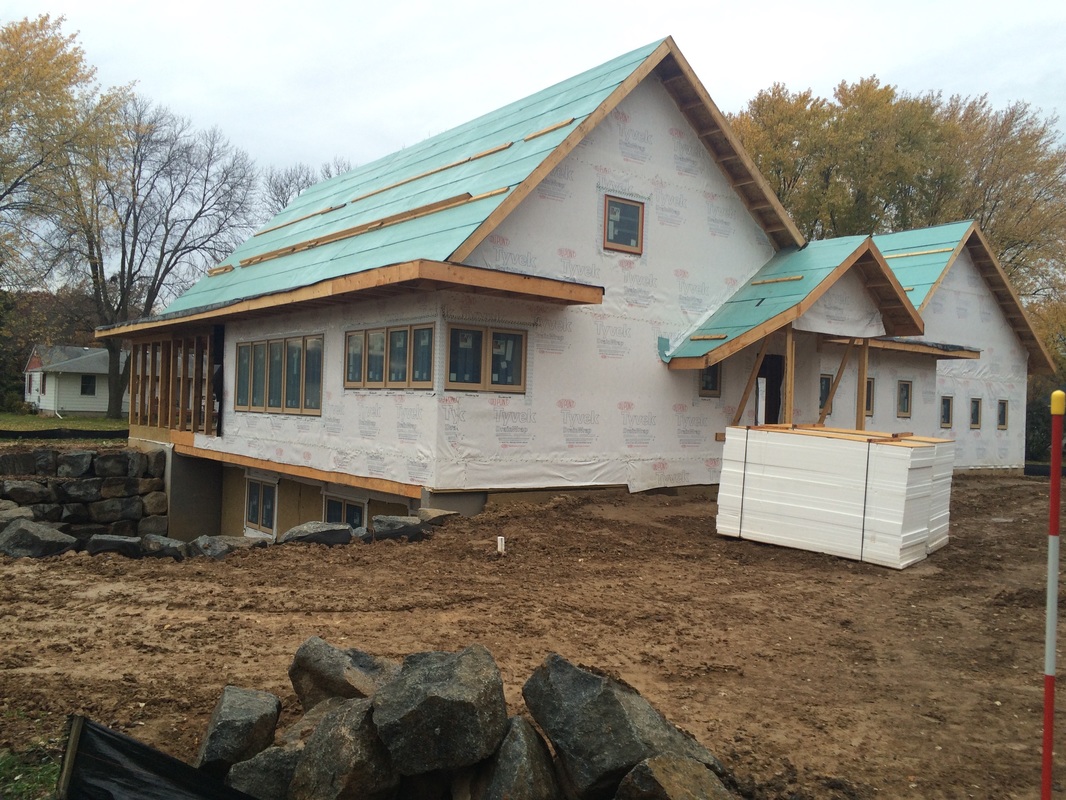|
Have you ever actually tried to put a group of ducks in a row?
That is how the last week has felt, although things are coming together nicely and the next few weeks should move quickly. Our final window has arrived and will be put in place this week. It is one of the windows on the side of the garage, so it hasn't slowed us down. The temporary doors should be here very soon as well. The poly has been placed in the basement on top of the gravel and inspected. On top of that will be 4 inches of foam insulation, and then 4 inches of cement over that. This was planned for last week. Unfortunately that duck didn't want to line up in a row and we ended up with the incorrect insulation. Fortunately, our guys were right on top of it and the correct insulation was delivered Friday. We are working on getting back on the schedule to have it installed, hopefully, next Monday. Once installed the radiant tubing will be placed/stapled to the foam and we will be running an in-floor conduit for an outlet under our gaming table. I'd like to share something I learned about this insulation as I never had thought about this before. There are two general ways to produce this stiff foam insulation. We are using Expanded Polystyrene (class 9) which is white in color. The other type is Extruded Polystyrene, typically blue or pink in color. The R-Value (the higher the R value the better an insulator it is) is very close (4.4/inch vs 5/inch) and the compression value (25 PSI) is the same as the typical Extruded foam insulation. The Expanded Polystyrene (EPS) is made by taking small plastic beads and filling them with air. This is done using steam. 98% of the volume of EPS is air. After the useful life (many decades, if not centuries) the EPS can be recycled and used again as insulation, packaging, etc. The Extruded Polystyrene (XPS) uses polystyrene crystals. A blowing agent is then added and fed into an extruder where the mixture is melted into a plastic ooze. The blowing agent used are an interesting mix of chemicals. As these off-gas some are damaging to the ozone, some are greenhouse gases and other VOCs. Another interesting aspect of the XPS is that it looses some of its R-value as it off gases. EPS does not (and any off-gassing is simply air). So while the XPS has a small advantage in R-value when new, the EPS will have a consistent R-value over time. So, it came down to the fact that the EPS will take less energy to make, use less damaging (locally and globally) chemicals both in the process of making it and as the product off-gasses, and have just as good, if not better insulation value over time. This week we are finishing up a few inspections, installing the final garage window, and starting to work with our cabinet maker (Jesse) to make sure the kitchen is just right (best laid plans, right:)). Much of the landscaping, now that the retaining wall is in place, will be waiting for spring. Plans will be polished off over the winter so we will be on the schedule for first thing in the spring. Oh, and last but not least, I am starting to clean up our current house to get it ready for sale, and cut down on the amount of "stuff" we will be moving (selling, donating or recycling where ever possible). If anyone wants any pictures of wolves, I may have something for you:-) Comments are closed.
|
AuthorMark really doesn't like to talk about himself, the house is much more interesting. Archives
September 2020
Categories
All
|
